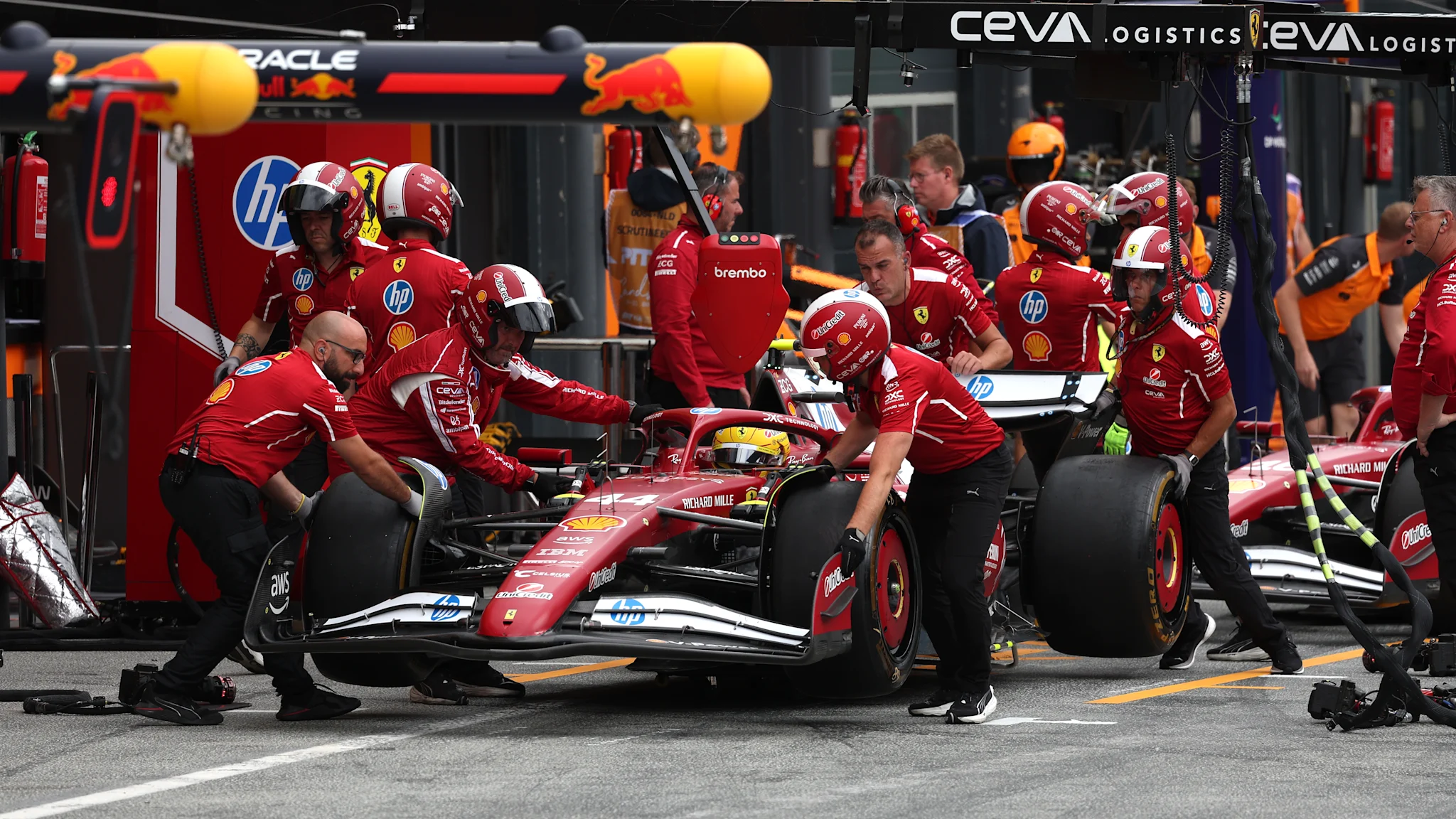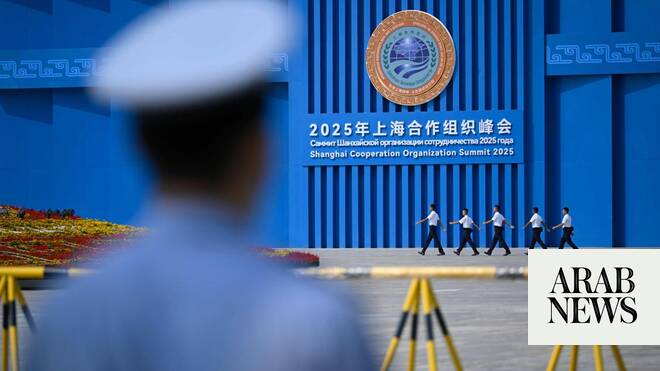- Disappointed Zverev on US Open exit: ‘I have to do better next year’ ATP Tour
- Auger-Aliassime upsets Zverev to reach US Open R4: ‘Job’s not done’ ATP Tour
- Felix Auger-Aliassime stuns No 3 Zverev to return to US Open second week The Guardian
- U.S. Open 2025: Canada’s Auger-Aliassime stuns Zverev to reach last 16 Sportstar
- Alexander Zverev Faces Brutal Backlash After Shocking Third Round Exit At US Open: ‘Worst No.3 Of All Time’ Times Now
Blog
-
Disappointed Zverev on US Open exit: 'I have to do better next year' – ATP Tour
-

What are the tactical options for the Dutch Grand Prix?
McLaren’s MCL39 is proving to be an excellent all-rounder – but the thing it likes best is medium-speed corners, and there’s a lot of those at Zandvoort. The result, in qualifying, was Oscar Piastri pipping Lando Norris to pole, as the papaya cars locked out the front row.
Behind them, it’s more of a Stroopwafel-fight. Max Verstappen will start third – but Isack Hadjar did a magnificent job to join him on the second row, ahead of George Russell and the Ferraris.
On race day there will be different tyre strategies in play, and capricious weather around to mix things up. So let’s take a look at the tactical options the teams have when the lights go out…
Continue Reading
-

Suffolk bikini bodybuilder to compete at world championships
George KingBBC News, Suffolk
 Supplied
SuppliedVictoria Emily is headed to the FMG World Finals in Australia next month A mother-of-two who defied the odds to become an elite fitness athlete and bikini model is preparing to take part in an international competition.
Victoria Emily, from Bury St Edmunds, in Suffolk, was born with Lymphoedema in her legs, which can cause difficulty with movement and repeated skin infections.
Throughout her life she has had to manage her body’s natural water balance, something she has achieved with medical massages, training and tailored nutrition.
She will represent Britain at the FMG World Finals in Australia next month.
 Supplied
SuppliedMiss Emily won her first professional title in Italy in June Miss Emily won her first professional title in Italy in June and then finished as the highest-placed UK competitor at this year’s FMG show in London.
The event saw international athletes compete in everything from fitness, bikini and wellness categories to those focused on muscle, figure and makeover.
During each heat, participants were scored on their poses, physique, and overall stage presentation, with Miss Emily taking home third place in the bikini category.
“It felt like a mini World Championships,” said Miss Emily.
“To stand on the podium there, knowing I’ll soon be stepping onto the real World’s stage, was an incredible moment.”
‘Big dreams start locally’
Miss Emily helps empower other women after they give birth through training, coaching and hormone support.
“I know what it feels like to have extra barriers, and that’s why I’m passionate about helping women work with their bodies to bring out their best,” she said.
“This journey has proved that big dreams can start locally,” said Miss Emily.
“I’ll be proud to carry Bury St Edmunds and Suffolk with me onto the world stage.”
Continue Reading
-

There may be a vanishing gas giant in the habitable zone around our nearest Sun-like star
Get the key facts behind this story in our 1-minute read
Exciting evidence unveiled: The James Webb Space Telescope may have spotted a Saturn-like gas giant orbiting Alpha Centauri A, the closest Sun-like star to Earth
Closest potential exoplanet yet: This candidate – if confirmed – would be the nearest world discovered orbiting a star like our Sun in its habitable zone
Imaging with MIRI: Webb’s Mid-Infrared Instrument (MIRI), using a coronagraph to block out starlight, revealed the faint planetary signal near Alpha Centauri A
Planetary details: The object appears to have a similar mass to Saturn and orbits roughly two astronomical units from its star – twice Earth–Sun distance
Not habitable itself: As a gas giant, it couldn’t support life, but its location in the habitable zone makes the system intriguing
Disappearing act: The candidate, dubbed S1, was detected in 2024 but not seen again in follow-up Webb observations in early 2025, likely due to its orbit obscuring it temporarily
Orbital dynamics: Modeling suggests S1 could be on an eccentric orbit inclined relative to the Alpha Centauri A–B plane, with a 2–3-year period
Eyes on the sky: If this candidate is real, it may reappear around 2026–2027, giving astronomers a chance to confirm its existence, and possibly search for moons
Credit: NASA, ESA, CSA, STScI, R. Hurt (Caltech/IPAC) Continue Reading
-

Researchers Accidentally Create Unprecedented New Gold Compound
Illustration of intense pulses from an X-ray free-electron laser (left) heating compressed samples of hydrocarbons to extreme conditions, resulting in the reaction of gold and hydrogen to form gold hydride (center). The gold atoms, shown in gold, are fixed in a hexagonal crystal lattice through which the hydrogen, shown in white, diffuses freely in a “superionic” state. Credit: Greg Stewart/SLAC National Accelerator Laboratory SLAC scientists created gold hydride in extreme lab conditions. The work sheds light on dense hydrogen and fusion processes.
By chance and for the first time, an international team of researchers led by scientists at the U.S. Department of Energy’s SLAC National Accelerator Laboratory succeeded in creating solid binary gold hydride—a compound composed solely of gold and hydrogen atoms.
The team had originally set out to investigate how hydrocarbons, molecules made of carbon and hydrogen, transform into diamonds under extreme pressure and heat. During experiments at the European XFEL (X-ray Free-Electron Laser) in Germany, they placed hydrocarbon samples with a thin layer of gold foil, intended only to absorb X-rays and transfer heat to the relatively weakly absorbing hydrocarbons. Unexpectedly, alongside diamond formation, they observed the creation of gold hydride.
“It was unexpected because gold is typically chemically very boring and unreactive – that’s why we use it as an X-ray absorber in these experiments,” explained Mungo Frost, a staff scientist at SLAC and the study’s lead author. “These results suggest there’s potentially a lot of new chemistry to be discovered at extreme conditions where the effects of temperature and pressure start competing with conventional chemistry, and you can form these exotic compounds.”
The findings, published in Angewandte Chemie International Edition, demonstrate how chemical behavior can shift dramatically under extreme environments, such as those found deep inside planets or within hydrogen-fusing stars.
Studying dense hydrogen
To achieve these results, the researchers compressed hydrocarbon samples to pressures exceeding those inside Earth’s mantle using a diamond anvil cell. They then exposed the samples to bursts of X-ray pulses from the European XFEL, heating them above 3,500 degrees Fahrenheit. By analyzing how the X-rays scattered from the samples, the team tracked the structural changes taking place.
As anticipated, the data confirmed that carbon atoms had arranged into a diamond lattice. However, they also revealed unexpected signals: hydrogen atoms had reacted with the gold foil to form gold hydride.
At the conditions generated in the experiment, hydrogen existed in a dense, “superionic” state, in which hydrogen atoms moved freely within the rigid gold lattice. This behavior enhanced the conductivity of the gold hydride, offering new insight into the behavior of materials under extreme pressures and temperatures.

Under extreme conditions – like those in the hearts of planets or in exploding stars – materials can enter other exotic phases with unique characteristics. At SLAC, researchers are studying some of the most extreme and exotic forms of matter ever created, in detail never before possible. Credit: SLAC National Accelerator Observatory Hydrogen, which is the lightest element of the periodic table, is tricky to study with X-rays because it scatters X-rays only weakly. Here, however, the superionic hydrogen interacted with the much heavier gold atoms, and the team was able to observe hydrogen’s impact on how the gold lattice scattered X-rays. “We can use the gold lattice as a witness for what the hydrogen is doing,” Mungo said.
The gold hydride offers a way to study dense atomic hydrogen under conditions that might also apply to other situations that are experimentally not directly accessible. For example, dense hydrogen makes up the interiors of certain planets, so studying it in the lab could teach us more about those foreign worlds. It could also provide new insights into nuclear fusion processes inside stars like our sun and help develop technology to harness fusion energy here on Earth.
Exploring new chemistry
In addition to paving the way for studies of dense hydrogen, the research also offers an avenue for exploring new chemistry. Gold, which is commonly regarded as an unreactive metal, was found to form a stable hydride at extremely high pressure and temperature. In fact, it appears to be only stable at those extreme conditions as when it cools down, the gold and hydrogen separate. The simulations also showed that more hydrogen could fit in the gold lattice at higher pressure.
The simulation framework could also be extended beyond gold hydride. “It’s important that we can experimentally produce and model these states under these extreme conditions,” said Siegfried Glenzer, High Energy Density Division director and professor for photon science at SLAC and the study’s principal investigator. “These simulation tools could be applied to model other exotic material properties in extreme conditions.”
Reference: “Synthesis of Gold Hydride at High Pressure and High Temperature” by Mungo Frost, Kilian Abraham, Alexander F. Goncharov, R. Stewart McWilliams, Rachel J. Husband, Michal Andrzejewski, Karen Appel, Carsten Baehtz, Armin Bergermann, Danielle Brown, Elena Bykova, Anna Celeste, Eric Edmund, Nicholas J. Hartley, Konstantin Glazyrin, Heinz Graafsma, Nicolas Jaisle, Zuzana Konôpková, Torsten Laurus, Yu Lin, Bernhard Massani, Maximilian Schörner, Maximilian Schulze, Cornelius Strohm, Minxue Tang, Zena Younes, Gerd Steinle-Neumann, Ronald Redmer and Siegfried H. Glenzer, 4 August 2025, Angewandte Chemie International Edition.
DOI: 10.1002/anie.202505811Parts of this work were supported by the DOE Office of Science.
Never miss a breakthrough: Join the SciTechDaily newsletter.
Continue Reading
-

New study suggests ‘recipe’ to lower risk
Share on Pinterest To lower diabetes risk, simply following a Mediterranean diet may not be enough, new research suggests. Image credit: Helen Rushbrook/Stocksy - About one in every nine adults around the world lives with diabetes, with 90% of them having type 2 diabetes.
- Past studies show that certain lifestyle factors can help lower a person’s risk for type 2 diabetes, such as exercising regularly and eating a healthy diet like the Mediterranean diet.
- A new study has found that a combination of following a calorie-restricted Mediterranean-style diet, plus moderate exercise and following a weight-loss program, is a more effective way to lower type 2 diabetes risk compared to only following the Mediterranean diet.
“Type 2 diabetes mellitus is a major public health problem worldwide,” Jordi Salas-Salvadó, MD, PhD, professor of nutrition at the University of Rovira i Virgili in Spain and general coordinator of the PREDIMED trial, told Medical News Today.
“The prevalence of type 2 diabetes is increasing in parallel to the obesity epidemics, and type 2 diabetes is a potent risk factor for cardiovascular disease, blindness, renal failure, and lower limb amputation, decreasing quality of life, and increasing the healthcare expenditures. Through such complications, diabetes kills 5 million people annually worldwide and most of them prematurely,” explained Salas-Salvadó.
Salas-Salvadó is the corresponding and senior author of a new study recently published in the journal Annals of Internal Medicine, which adds to the evidence suggesting the Mediterranean diet may help lower type 2 diabetes risk.
In this study, researchers report that a combination of following a Mediterranean-style diet with fewer calories, plus moderate exercise and following a weight loss program, is a more effective way to lower type 2 diabetes risk compared to only following the Mediterranean diet.
This study is part of
PREDIMED-Plus trial — the largest European nutrition trial first started in 2013. Researchers followed more than 4,700 adults ages 55 to 75 from 23 health centers around Spain for 6 years. At the start of the study, participants had either overweight or obesity, had metabolic syndrome, and no history of heart disease or diabetes.Study participants were divided into two groups. The first group followed a calorie-reduced Mediterranean diet, a moderate exercise plan such as brisk walking and strength training, and were provided guidance through a professional weight loss program.
The control group only followed the Mediterranean diet without any calorie restriction, exercise advice, or weight loss plan.
Of the trial, Salas-Salvadó told us:
“Some years ago, in the context of the PREDIMED trial we have demonstrated that an ad libitum traditional MedDiet supplemented with either extra-virgin olive oil or mixed nuts — typically Mediterranean food rich in vegetable fat — reduced diabetes incidence by 30%, compared with a low-fat diet. However, this reduction occurred without parallel changes in body weight. Building on this finding, the PREDIMED-Plus trial was designed to test whether adding caloric restriction and physical activity to the MedDiet would provide additional benefit beyond the effect observed only with the MedDiet — the same recommendations that that we tested in the PREDIMED study a few years ago.”
At the study’s conclusion, researchers found that participants following the combination approach of a calorie-reduced Mediterranean-style diet, more moderate exercise, and professional support for weight loss, reduced their risk of developing type 2 diabetes by 31%, when compared to the control group.
“In adults aged 55 to 75 with overweight or obesity and other cardiometabolic risk factors, including prediabetes, even a relatively modest reduction in calorie intake combined with moderate physical activity further reduces the likelihood of developing type 2 diabetes,” Miguel Ruiz-Canela, MD, PhD, professor and chair of the Department of Preventive Medicine and Public Health at the University of Navarra in Spain and first author of this study, explained to MNT.
“Clinicians should consider recommending this multi-domain intervention approach for patients with overweight or obesity, particularly when conventional Mediterranean dietary advice alone has proven insufficient. We think that this multi-component lifestyle modification represents a practical and sustainable strategy that could be incorporated into routine clinical practice for diabetes prevention,” Ruiz-Canela told us.
In addition, scientists discovered that studyparticipants in the combination group lost an average of 3.3 kilograms (kg) and reduced their waist circumference by 3.6 centimeters (cm), compared to just 0.6 kg and 0.3 cm in the control group.
“A reduction of 3.3 kg in weight and 3.6 cm in waist circumference is clinically relevant, as even modest weight loss can significantly lower the risk of chronic conditions such as type 2 diabetes and cardiovascular disease,” Montse Fitó, MD, PHD, coordinator of the Cardiovascular Risk and Nutrition Research Group at the Hospital del Mar Research Institute and corresponding author on this study, told MNT.
“Additionally, maintaining these effects over the long term is crucial for ensuring the applicability and translation of these findings into practical recommendations. In this sense, the lifestyle intervention of the study has demonstrated a good adherence long-term,” said Fitó.
MNT had the opportunity to speak with Mir Ali, MD, a board-certified general surgeon, bariatric surgeon and medical director of MemorialCare Surgical Weight Loss Center at Orange Coast Medical Center in Fountain Valley, CA, about this study.
“[The findings are] not surprising to me because there have been other studies that show any kind of calorie deficit is beneficial for patients who are trying to lose weight,” Ali, who was not involved in this research, commented. “And also the Mediterranean diet, and diets based on that, they’ve also been shown to help people lose weight and reduce symptoms for many conditions like diabetes, hypertension, and other issues.”
“Diabetes and obesity in general are on the rise in this country, and anything that can show improvement in that is going to be helpful,” he continued. “The problem [is that] no one thing works for every person. So as long as there’s research going on showing different options for people, better ways to improve their health, I think it’s going to be helpful.”
MNT also spoke to Monique Richard, MS, RDN, LDN, a registered dietitian nutritionist and owner of Nutrition-In-Sight, likewise not involved in the study, who commented she was not surprised by its results, as we already know the Mediterranean diet is associated with improved insulin sensitivity, reduced inflammation, and better metabolic outcomes.
“This study highlights the added power of pairing dietary quality with moderation in calories, movement, and support — a trifecta that’s realistic and sustainable for those willing to learn, explore and embrace change,” Richard told us.
“The study reinforces that lifestyle patterns — not one single food — has the ability to drive prevention of chronic disease. Our bodies are meant to move, by complementing that with quality nutrition and appropriate intake, the body thrives and works to prevent disease.”
– Monique Richard, MS, RDN, LDN
For those who may want to follow in the steps of this research by following a calorie-reduced Mediterranean dietary pattern, Richard offered these tips for doing it safely:
- mindful use of olive oil and nuts — they’re heart-healthy, but calorie-dense; portion guidance can help balance enjoyment with moderation, using measuring spoons, and/or preportioning snacks
- focus on meal structure and consistency — regular meals with balanced protein, complex carbohydrates, and healthy fats stabilize blood sugar and provide satiety in preventing overeating later
- swap sugar-sweetened drinks with water, sparkling water, or herbal teas
- add more calorie-light and nutrient-dense foods such as leafy greens (arugula, cabbage, kale, spinach) and nonstarchy vegetables (tomatoes, radishes, cucumbers, peppers, etc.)
- use an app or food diary to increase awareness of what you are actually consuming versus what your body needs
- practical tools — consider using smaller plates, mindful eating (no TV, screens, or phones), sitting at a table, conversing with loved ones, slowing down meals by chewing, observing the smell, taste, texture, and tuning into hunger/fullness cues as well as observing the environment around you.
“I would highly recommend individuals and families work with a registered dietitian nutritionist (RDN) for personalized support, to further understand calorie needs versus calorie intake and especially if there are existing health conditions or are taking medications,” Richard added. “It is also important to screen for those that calorie reduction would not be appropriate for.”
Continue Reading
-

9-year NBA veteran Jeremy Lin announces retirement from professional basketball
Linsanity forever: The GameTime crew remember when Jeremy Lin took the NBA by storm for a few weeks in Feb. 2012.
Former NBA point guard Jeremy Lin announced his retirement from professional basketball in an Instagram post on Saturday night.
“It’s been the honor of a lifetime to compete against the fiercest competitors under the brightest lights and to challenge what the world thought was possible for someone who looks like me,” he wrote. “I’ve lived out my wildest childhood dreams to play in front of fans all around the world. I will forever be the kid who felt fully alive every time I touched a basketball.”
Undrafted in 2010, Lin averaged 11.6 points and 4.3 assists across a nine-year NBA career spanning 2010-19. Lin catapulted himself into international fame while playing for the New York Knicks in 2011-12, including an 11-game span in February in which he averaged 24.6 points, 9.2 assists and 4.1 rebounds. The shocking stretch earned the nickname “Linsanity.”
Lin became a full-time starting point guard the following two seasons in Houston before logging short stints with the Lakers, Hornets, Nets, Hawks and Raptors. He also played for teams in the Chinese Basketball Association, Taiwan Professional Basketball League and the NBA G League.
Continue Reading
-

Putin and Modi in China for summit hosted by Xi – Arab News
- Putin and Modi in China for summit hosted by Xi Arab News
- Putin and Modi in China for summit overshadowed by trade wars with US BBC
- India committed to improving ties with China, Modi tells Xi before SCO meet Al Jazeera
- SCO summit: World leaders gather in China’s Tianjin DW
- India’s Modi meets Xi on his first China trip in seven years as Trump’s tariffs bite CNN
Continue Reading
-

Norwich’s 1985 ‘Live Aid’ concert remembered
Paul HayesBBC Radio Norfolk
 Mark Hodgson
Mark HodgsonThe Supremes, with original member Mary Wilson, performed at the 1985 Anglia for Africa concert in Norwich A Live Aid-inspired charity concert which drew thousands of people to a city park 40 years ago has been remembered for a BBC programme.
Anglia for Africa was a 12-hour gig held at Earlham Park in Norwich on 31 August 1985.
Artists who performed to help raise money to fight famine in Africa included rock band Hawkwind, pop group Amazulu and Motown stars The Supremes.
Chris Dawes, who was one of the organisers, told a special feature for BBC Radio Norfolk’s Thordis Fridriksson programme that the concert had been “probably one of the biggest” of the Live Aid “copycat” events to be held.
He said there was a lot of support from people in Norwich in the five weeks leading up to the gig, evident at the free office space they were given in the city’s Charing Cross Centre.
“Once people knew it was happening, we had quite a lot of people passing who would come up and chuck money into the donation buckets and say ‘good luck’,” he said.
“There was a lot of goodwill in Norwich for the event.”
 Mark Hodgson
Mark HodgsonAbout 9,000 people packed into Earlham park for the 12-hour Anglia for Africa event in 1985 The main organiser of Anglia for Africa was Mark Foster, who told BBC Look East two days before the event in August 1985 that he had been inspired by watching the Live Aid concert on TV the previous month.
“I thought it was very very important to continue [fundraising],” he said.
“So, first thing Monday morning, nine o’clock, I went to the council to organise a venue, and it went from there.”
 Mark Hodgson
Mark HodgsonAnglia Television recorded the concert and broadcast a 40-minute highlights programme on ITV the following afternoon Local bands from Norwich and across Norfolk formed much of the day’s line-up.
Among them was “space rock” group Underground Zero, whose bass player Andrew Rix recalled they were also instrumental in helping get one of the big acts to come to Norwich.
“We’d been in contact with Hawkwind quite a lot, so we told them we could get Hawkwind to headline,” he said.
“And, of course, once Hawkwind agreed to headline, other bands were more happy to join in, so it grew quite rapidly from then.”
 Mark Hodgson
Mark HodgsonThe Farmer’s Boys were one of several local Norfolk bands who took part in the concert One of the most popular Norwich acts of the 1980s had been indie band The Farmer’s Boys.
They had a strong local following, but had split up in March 1985.
Singer Chris Basford explained that they were persuaded to reform specially for the event.
“We’d all moved on – three or four months is a long time when you’re younger, it seemed like ancient history to us,” he said.
“So when we were asked to play, our immediate reaction was ‘we’re no longer doing that’. Somebody was clearly very persuasive.”
They ended up as the top local act on the bill, playing in the evening just before the main headliners.
“It would have been the biggest audience we ever played to anywhere,” Mr Basford added.
Helicopter arrival
 Mark Hodgson
Mark HodgsonAlthough featuring only one original member, The Supremes were one of the biggest names to take part in the event At its height, it was estimated that about 9,000 people packed into Earlham Park for the charity gig. In terms of money raised, BBC Look East at the time reported a figure of £17,000 – which would be about £50,000 in 2025.
One of those in the crowd was Mark Hodgson, who particularly remembered the arrival of The Supremes, led by original member Mary Wilson.
“A helicopter flew over, and I wondered what that was,” he said.
“A friend of mine said that he’d seen The Supremes arrive by helicopter. So after they’d been on, I legged it to the landing site. They’d transferred from the helicopter to the stage in an open-topped Rolls-Royce.”
 Mark Hodgson
Mark HodgsonThe Supremes arrived and departed by helicopter, and were driven to and from the stage in an open-topped Rolls Royce Chris Dawes also remembers the arrival of the group very well.
“They paid for the helicopter. I remember going to get them in, so their car followed my 14-year-old Avenger, a really battered horrible old yellow car, to get them backstage.
“They all had their frocks on, they got out of the car, got on stage and started.
“It was quite incredible. And then they came off, got back in the car, went back to the helicopter and they were off and they were gone.
“It was real showbiz.”
Diverse line-up
 Mark Hodgson
Mark HodgsonThe African Children’s Choir were among the groups performing at the concert The Supremes were among several black performers on the bill, which Chris says was a deliberate attempt to assemble a more diverse line-up than was common at the time.
“We did make a conscious effort to get particularly the African Children’s Choir,” he said.
“We had Eek-a-Mouse as well, the Jamaican reggae guy, he was second top of the bill. We had another reggae band from Ipswich called Jah Warrior.
“Amazulu as well.”
 Mark Hodgson
Mark HodgsonThe concert raised £17,000 – equivalent to about £50,000 today More than 20 acts played over the 12 hours, with highlights broadcast on BBC Local Radio stations across the East of England.
Anglia Television also recorded the gig, showing a 40-minute compilation programme the following afternoon.
Despite this coverage, however, Anglia for Africa is little-remembered today.
Paul Holden, one of the guitarists with Underground Zero, has a possible explanation for the relative obscurity of the event.
“Anglia is a bit of an outlier as far as the nation is concerned, so things that happen here don’t tend to get reported as much,” he said.
“If it had happened closer to London or closer to the Midlands there probably would be more memories of it.”
Continue Reading
-

Female Filmmakers Lead Large Contingent of Arab Features at Venice
Continuing a great year for Arab cinema at major festivals — with films such as “Once Upon a Time in Gaza,” “The President’s Cake” and “The Little Sister” winning major awards in Cannes — the Venice Film Festival is packed to the brim with talent from the region. Titles include twice Oscar-nominated Kaouther Ben Hania in competition with “The Voice of Hind Rajab,” Maryam Touzani’s “Calle Malaga” and Shahad Ameen’s “Hijra” in Venice Spotlight, and Suzannah Mirghani’s “Cotton Queen” and Yanis Koussim’s “Roqia” in Critics’ Week.
Egyptian producer and distributor Mohamed Hefzy’s Film Clinic arrives on the Lido as the producer behind “Hijra” and “Cotton Queen,” and the distributor behind “Roqia.” Speaking with Variety, Hefzy recalls having to shoot “Cotton Queen” — the first-ever fiction feature film by a female Sudanese director — in Egypt due to Sudan’s ongoing civil war, in an increasingly frequent move as conflicts escalate in the region.
“We have to live with the instability,” Hefzy exhales. “It doesn’t seem like it’s going to go away any time soon. I hope I’m wrong, but assuming that things don’t happen quickly, filmmakers need to keep telling stories. It’s great that big festivals and programmers are picking up unique films from the Arab world. It’s not a coincidence. In times of conflict and instability, you get meaningful stories.”
Ameen, whose feature debut, “Scales,” also played Venice, says she is thrilled to be back on the Lido with “Hijra,” a film she says works as a showcase of her native Saudi Arabia. The drama, a road trip between grandmother and granddaughter, was shot across eight different Saudi cities in an ambitious production.
“I spent three years travelling with my producers, going from the south in Jeddah to the borders of Jordan as I was writing the script,” she recalls. “If I encountered an interesting location or person, I would make it part of the story. I wanted the film to be about the experience of traveling through the kingdom, so that the audience could come with us.”
One of the most anticipated Arab titles of the fall festival season, Annemarie Jacir’s historical epic “Palestine 36,” will take its first bow in Toronto. Asked about the heavy presence of female Arab filmmakers in the circuit this year, the director says it’s “always interesting to me that people are surprised by the large number of female directors there are in the Arab world.”
“It is well documented that the playing field in the film industry in the Arab world is way ahead of many other countries, and women have been at the forefront for a long time,” she adds, asking why the focus isn’t rather on how Venice has never once programmed a film by a Palestinian woman in its official selections.
Jacir also defies the perceived notion of an increase in Arab films in major Western festivals: “I think it’s the opposite. There is a decreased presence of Arab films, amplified now that there are more Arab filmmakers than ever before, making really great films. Unfortunately, the festivals see our entire region as one entity and feel they should only choose one film ‘from our region.’”
Still, Ameen remains hopeful, citing Saudi Arabia as an example of a country marrying a desire to tell untold stories with a healthy funding and talent development ecosystem.“Six years ago, two films were coming out of Saudi in a year. Now, with the government’s support, we have so many more,” she says. “Arabs carry the stories of our grandparents; we are storytellers. I’m so happy our films are travelling abroad and letting the international community see who we truly are.”
Continue Reading
